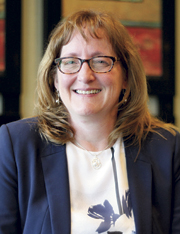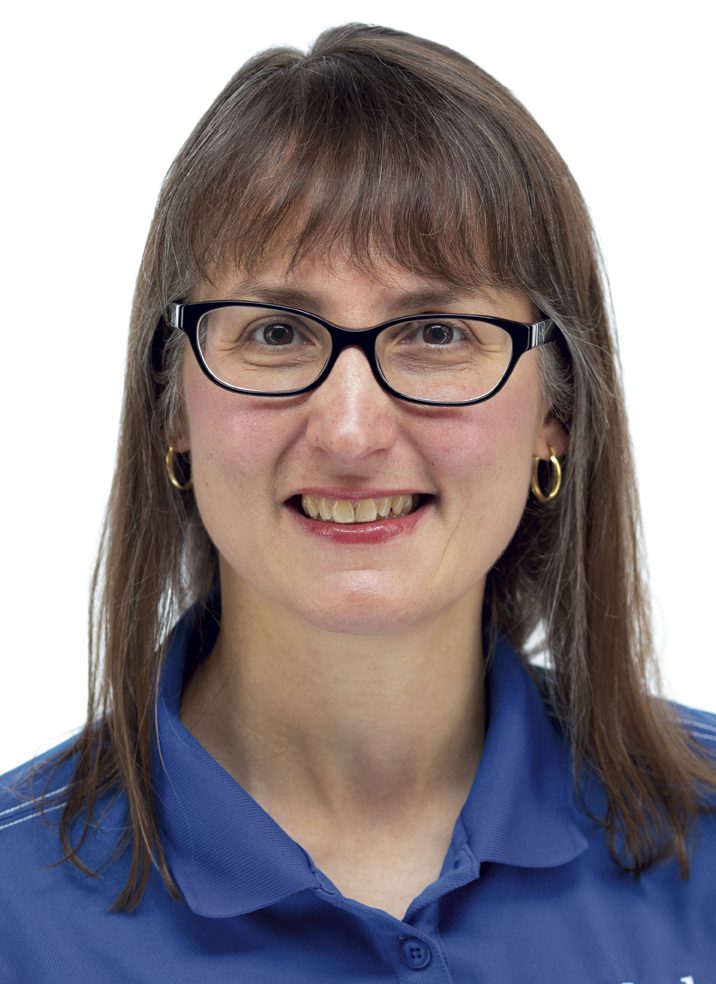NEW INSURANCE PRODUCTS
Is it time for a simpler approach?
By Joseph S. Harrington, CPCU
When it comes to developing new property/casualty insurance products, no organization has a longer history or greater standing than Lloyd’s, the centuries-old market of underwriters based in London.
It’s noteworthy, then, that the venerable Lloyd’s regards the COVID-19pandemic of 2020 as an “inflection point” in the history of insurance coverage.
In its detailed October 2020 report titled “Building simpler insurance pro-ducts to better protect customers,” Lloyd’s makes it clear that the entire insurance industry stands to suffer from a crisis of confidence among buyers dismayed to learn that insurance for business interruptions does not, for the most part, cover shutdowns due to a pandemic.
Without conceding the coverage—Lloyd’s itself resisted pandemic-related claims—Lloyd’s acknowledges that widespread denials of business interruption coverage for COVID-19 led to“ a frustrating and disappointing outcome for all.” The report warns that “if customers’ claims are not paid when they believe they have cover, they may not receive compensation that they were relying on and may over time choose to insure less risk.”
The principal problem, according to Lloyd’s, is the complexity of insurance contracts developed almost ad hoc over decades to adhere to legal precedents while addressing new risk factors. Compounding the problem, especially for personal and small commercial accounts, is the “extended distribution chain” that leads buyers to “rely on the broker or agent closest to them to communicate the cover[age].”
The result, Lloyd’s reports, is “an expectation gap between the coverage insurers believe they have sold, and the coverage customers believe they have bought,” leading to disillusionment and distrust about insurance in general.
In light of the experience of 2020, Lloyd’s calls for a fundamental and far-reaching reassessment of how insurance contracts are developed, with a view toward simplifying the structure, language, and format of policies while carefully defining the scope of coverage to reduce chances for misunderstanding.

—Debbie Williams
Senior Vice President and Regional Manager, Commercial Lines
USG Insurance Services, Inc.
Prevention and protection
Before agonizing over the wording of their policies, however, insurers are coming to regard the policy contract as a secondary characteristic, at least in terms of attracting applicants.
“Non-insurance is the new insurance,” reads Deloitte’s “A demanding future: The four trends that define insurance in 2020” report. By that, the global consulting giant means that more and more insurance buyers are as interested in the tech-driven risk detection and mitigation services that come with a policy as they are with the coverage.
“Growth will come from preventative, as well as protective approaches,” Deloitte says, to which one can add an admonition to insurers from EY (formerly Ernst & Young) in its 2020 Global Insurance Outlook report that “the need for digitally enabled risk prevention offerings is higher than ever.”
Another trend that could de-emphasize policy provisions and simplify insurance transactions is the growing application of parametric insurance.
Under a parametric risk contract, an insurer agrees to pay an agreed amount to the insured when an event of a certain magnitude occurs. Parametric coverage is widely used to provide liquidity to governments in the wake of natural disasters; payouts are triggered when windstorms or seismic events reach certain thresholds of magnitude, without necessarily requiring reports of specific losses.
Parametric coverage is starting to penetrate into coverage for small and medium-sized enterprises (SMEs). In September 2020, Lloyd’s announced what it believes to be the first parametric business income coverage for SMEs forced to suspend operations due to a cyber incident.
Backed by Tokio Marine Kiln, the policy compensates an insured that suffers a severe disruption of its internal network, cloud-based systems, or other operations in a greatly reduced amount of time compared to the typical process of investigating a loss and adjusting a claim, according to an October 2020 Atlas Magazine article.
No minimums
For all the challenges faced in 2020, providers continue to offer and sustain new products.
Glatfelter Insurance Group, a leading wholesale broker and program manager, is appealing directly to independent agents and brokers by continuing to forgo requirements for a minimum number of accounts or minimum premium volume for its latest product innovations.
“Agents can write as few or as many accounts with Glatfelter as they like,” says President and CEO Christopher Flatt. “Our focus remains on providing better support to our agent partners and being an advocate for the sectors we serve.”
Two of those sectors are religious organizations and charter schools, for which Glatfelter has released revised products in 2020.
In light of increased violence and legal troubles facing congregations, Glatfelter revised its religious program to include, among other things:
- Security Enforcement Liability Coverage, to respond in the event that someone is injured as a result of security personnel performing their duty; and
- Religious Expression Defense Coverage, to respond to claims of discrimination and challenges to tax exemptions lodged against a religious organization for actions based on their beliefs.
For the growing charter school market, Glatfelter Public Practice has revamped its program and now provides coverage for:
- Reauthorization Legal Expense Reimbursement, which reimburses charter schools for some of the expenses entailed in defending a rejected reauthorization; and
- Donation Assurance, which covers the loss of donations that cannot be fulfilled because of a donor’s bankruptcy, unemployment, or incapacitation.
The charter school program also includes coverage for accidental death and dismemberment and cyber extortion at increased limits, plus “green” coverage for rebuilding a damaged structure to a high level of energy and environmental efficiency, beyond that required in local minimum standards.
Technology enabled
While Lloyd’s calls on the industry to reconsider the basics of insurance product development, one common characteristic of new insurance products is that they are enabled by technologies in administration and risk assessment that create new opportunities to manage risk.
That’s certainly the case for the Investor Property Program (IPP), launched in October 2020 by Integrated Specialty Coverages, a program administrator that utilizes artificial intelligence and advanced analytics to drive development of new products.
The IPP provides property and general liability coverage for owners of at least five one- to four-family residential properties held for rental, with no limitation on the number of locations insured under a policy.
Property coverage is available for up to $5 million in total insurable value at any one location, and extends to condominium rentals, short-term vacation rentals, and vacant properties, and to renovation and builders risk exposures. Liability coverage for bodily injury and property damage extends to claims arising from dog bites and swimming pools, among other hazards.
The program is made possible through the platform developed to support it, according to Gareth Jelley, senior vice president of Integrated Specialty’s property division.
“This is traditionally a burden-some line of business,” Jelley says. “It typically requires individual monitoring of each property acquired and sold, and the related adjustments to premium.”
According to Jelley, the IPP platform instantly uploads all submitted locations and automatically integrates extensive third-party data on their size, construction, protection class, and other characteristics, as well as their exposure to crime, wildfire, and other insured hazards.
Jelley estimates that the IPP platform can assess up to 900 data points for each location, allowing for fast quoting with greatly reduced effort on the part of the applicant and producer.
“We’re not only providing speed,” Jelley says. “We also don’t need to ask as many questions, yet we’re doing a better job screening accounts. It makes the process much easier.”

—Irene Jones
Program Manager, Campground and RV Park Specialty Insurance
Marshall & Sterling
Pandemic fostered
While the COVID-19 pandemic suppressed a lot of commerce, it has also fostered activities that have created or extended risks that require insurance coverage.
As school locations have been shutdown to protect students from infection, many parents have responded by creating “micro-schools,” also known as “pandemic pods,” where small groups of students gather for online learning. These allow students to have some limited in-person contact with their peers while allowing parents to share the duties of supervising them.
USG Insurance Services, Inc. has responded to the trend by developing a program with one of its carriers that provides general liability coverage for micro-schools with a small sub-limit for sexual molestation claims.
Micro-schools with up to 10 students can qualify for the program, as long as they are in one location, according to Debbie Williams, USG’s senior vice president and regional manager of commercial lines.
“We are not looking to insure pods that move about from location to location,” she says. “We also require background checks be done on the teacher/parent that is operating the school.”
Camping is an established activity that received a boost from the pandemic, as families sought an opportunity to get out of house confinement while staying safe from infection.
Marshall & Sterling, among the nation’s largest privately owned agencies, was well-positioned to serve campgrounds and recreational vehicle parks with a program it developed a few years ago for Great American Insurance.
“Campground ownership is a huge growth niche,” says Irene Jones, program manager for Marshall & Sterling’s Campground and RV Park Specialty Insurance program. “Camping has become very popular, as people are excited to get out of the house and be outside.”
Jones finds that many people who are late in their careers or retired are taking up campground ownership and management as a second career that allows them to spend time in a vacation environment while earning income.
Today’s idea of camping is often a far cry from the traditional notion of “roughing it” in the woods, with amenities limited to a crude bathhouse and water spigot.
“Glamping,” short for “glamour camping,” is the term now used to describe recreation in a natural setting with many of the comforts of home, increasingly in luxury cabins. Jones characterizes some new campgrounds as “almost amusement parks,” with arcades and entertainment venues, in addition to state-of-the-art recreational features, such as water slides.
These types of enhancements to “campgrounds” have resulted in growing property exposures for the class and a concurrent uptick in wind losses, Jones says. Many of the locations are in relatively remote rural areas protected by volunteer fire departments.
Just because a lot of people are eager to get outdoors, doesn’t mean they’re ready to do so, says Jones. On the liability side of the business, Jones attributes many claims to what she calls “nature deficit disorder,” a lack of awareness among urban and suburban dwellers concerning the perils of the outdoors.
Among the biggest liability concerns Jones cites are bites by dogs that people bring camping with them. The comforts of home apparently include the hazards of home.
For more information:
Glatfelter Insurance Group
www.glatfelters.com
Integrated Specialty Coverages
www.iscmga.com
Marshall & Sterling
www.marshallsterling.com
USG Insurance Services, Inc.
www.usgins.com
The author
Joseph S. Harrington, CPCU, is an independent business writer specializing in property and casualty insurance coverages and operations. For 21 years, Joe was the communications director for the American Association of Insurance Services (AAIS), a P-C advisory organization. Prior to that, Joe worked in journalism and as a reporter and editor in financial services.





